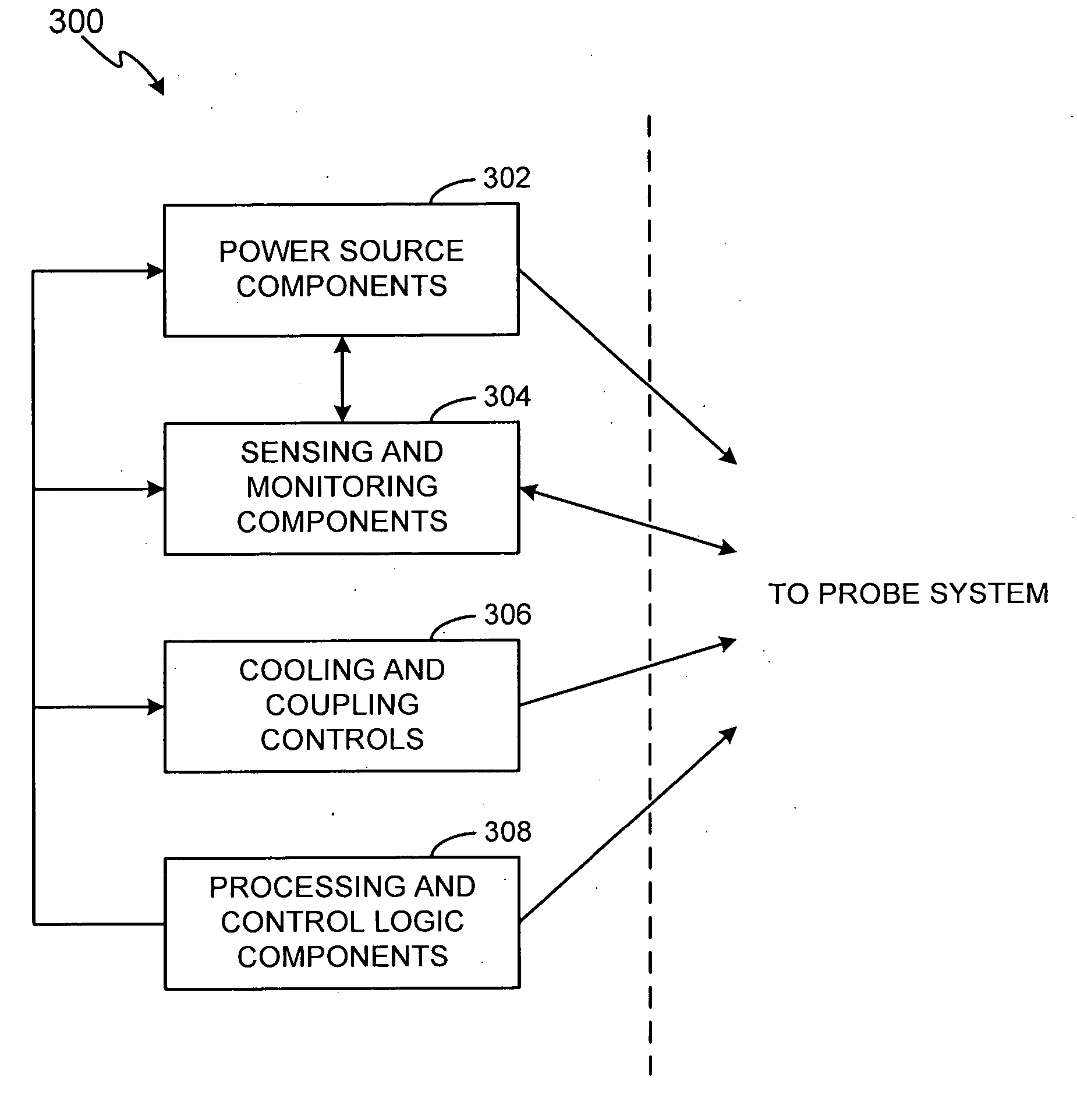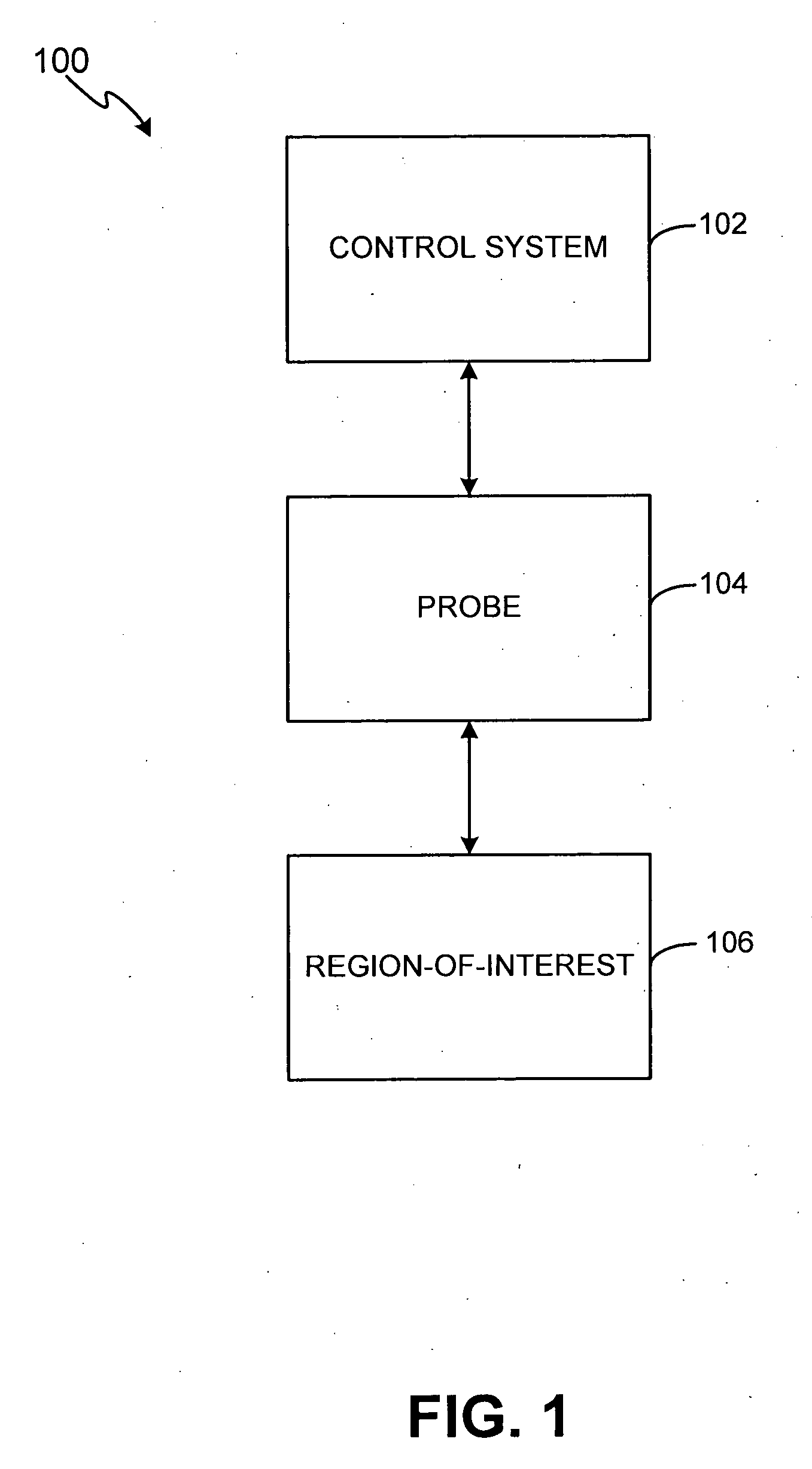Method and system for controlled thermal injury of human superficial tissue
a technology of superficial tissue and thermal injury, applied in the field of therapeutic treatment systems, can solve the problems of limiting the utility of hissong technique, hindering placement, and difficult to achieve, and achieve the effects of facilitating treatment planning, controlling and/or delivering acoustic energy, and controlling the thermal ablation of tissu
- Summary
- Abstract
- Description
- Claims
- Application Information
AI Technical Summary
Benefits of technology
Problems solved by technology
Method used
Image
Examples
Embodiment Construction
[0028] The present invention may be described herein in terms of various components and processing steps. It should be appreciated that such components and steps may be realized by any number of hardware components configured to perform the specified functions. For example, the present invention may employ various medical treatment devices, visual imaging and display devices, input terminals and the like, which may carry out a variety of functions under the control of one or more control systems or other control devices. In addition, the present invention may be practiced in any number of medical or treatment contexts and that the exemplary embodiments relating to a therapeutic treatment method and system for controlled thermal injury of human superficial tissue as described herein are merely a few of the exemplary applications for the invention. For example, the principles, features and methods discussed may be applied to any other medical or other tissue or treatment application. ...
PUM
 Login to View More
Login to View More Abstract
Description
Claims
Application Information
 Login to View More
Login to View More - R&D
- Intellectual Property
- Life Sciences
- Materials
- Tech Scout
- Unparalleled Data Quality
- Higher Quality Content
- 60% Fewer Hallucinations
Browse by: Latest US Patents, China's latest patents, Technical Efficacy Thesaurus, Application Domain, Technology Topic, Popular Technical Reports.
© 2025 PatSnap. All rights reserved.Legal|Privacy policy|Modern Slavery Act Transparency Statement|Sitemap|About US| Contact US: help@patsnap.com



